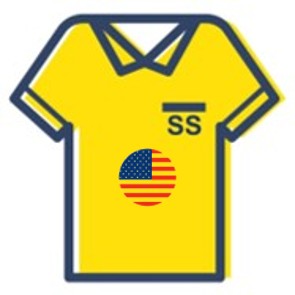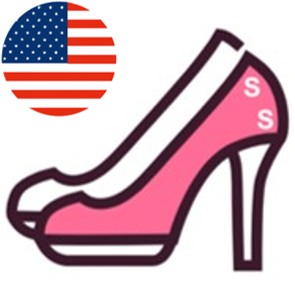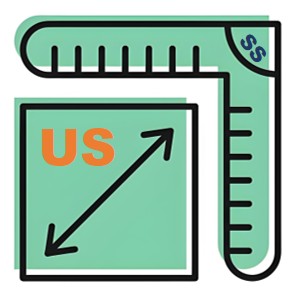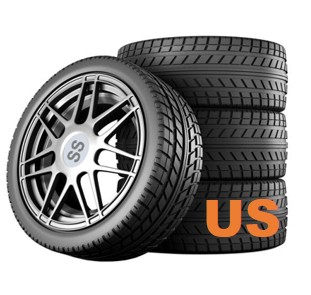American Standard Size
American Flag Size

US Clothing Size

US Shoe Size

US Paper Size

US Tire Size

About American Standard
Here is a breakdown of the main types of national standards in the U.S., the key organizations that create them, and how they are used.
1. The National Standards Strategy (NSS).
2. Key Standard-Developing Organizations (SDOs).
A: ANSI (American National Standards Institute).
ANSI is not a government agency and does not write standards itself. Instead, it is the coordinating body and oversight organization for the U.S. voluntary consensus standards system.
Role: It accredits SDOs (like ASTM, IEEE, etc.) to ensure their processes are fair, open, and balanced. It also approves standards as "American National Standards (ANS)" and represents U.S. interests in international standards bodies like ISO and IEC.
B: ASTM International (formerly American Society for Testing and Materials).
One of the world's largest developers of voluntary consensus standards.
Focus: Technical standards for materials, products, systems, and services. They are famous for standards in construction (e.g., steel, concrete), petroleum, consumer products, and the environment.
Famous Standard: ASTM A36 - Standard specification for carbon structural steel.
C: NFPA (National Fire Protection Association).
A global self-funded nonprofit organization.
Focus: Fire, electrical, and building safety. Their codes and standards are adopted into law by state and local governments across the U.S.
Famous Standard: NFPA 70: National Electrical Code (NEC®) - The benchmark for safe electrical design, installation, and inspection.
D: IEEE (Institute of Electrical and Electronics Engineers).
The world's largest technical professional organization.
Focus: Standards for the electrical, electronics, and computing industries, including telecommunications, information technology, and power generation.
Famous Standard: IEEE 802 - The set of standards for Ethernet and Wi-Fi (e.g., 802.11 Wi-Fi).
E: UL Solutions (formerly Underwriters Laboratories).
A global safety science company.
Focus: Safety certification and standards. While known for their safety certification marks (the "UL Listed" mark), they also develop hundreds of safety standards.
Famous Standard: UL 94 - Standard for Safety of Flammability of Plastic Materials.
F: ASME (American Society of Mechanical Engineers).
A professional association that promotes the art, science, and practice of mechanical engineering.
Focus: Standards for mechanical devices and systems, particularly pressure technology.
Famous Standard: ASME Boiler and Pressure Vessel Code (BPVC) - Rules for the design, fabrication, and inspection of boilers and pressure vessels. It is adopted into law in all U.S. states and Canadian provinces.
G: API (American Petroleum Institute).
The largest U.S. trade association for the oil and natural gas industry.
Focus: Standards for all segments of the oil and gas industry, covering drilling, production, refineries, and pipelines.
Famous Standard: API 5L - Specification for line pipe used in pipelines.
3. Government Regulatory and Metrology Standards.
A: NIST (National Institute of Standards and Technology).
A non-regulatory agency within the U.S. Department of Commerce.
Role: NIST is the nation's official metrology institute. It develops and maintains the primary measurement standards (e.g., the definition of a kilogram, a second, a volt). It also supports the development of standards through its research and often works with SDOs. NIST publishes the Handbook 44, which provides specifications for weighing and measuring devices (like grocery store scales and gas pumps).
B: Federal Agencies and Regulations.
Federal agencies create and enforce mandatory regulations, which often incorporate by reference the voluntary standards developed by SDOs.
① OSHA (Occupational Safety and Health Administration): Adopts standards to ensure safe working conditions. For example, it enforces electrical safety standards based on the NFPA's NEC.
② CPSC (Consumer Product Safety Commission): Creates and enforces mandatory safety standards for consumer products (e.g., toys, cribs, lighters).
③ EPA (Environmental Protection Agency): Sets mandatory national standards for air and water quality, emissions, and fuel efficiency (e.g., Tier 3 vehicle emissions standards).
④ FDA (Food and Drug Administration): Sets mandatory standards for food, drugs, medical devices, and cosmetics (e.g., Current Good Manufacturing Practices - CGMPs).